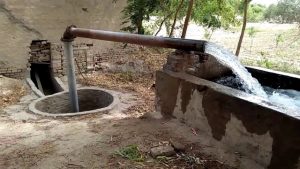
Mycorrhiza is a symbiotic (mutualistic) association of certain fungi with roots of higher plants. Mycorrhiza increase water and nutrient uptake by plants.

DIFFERENCES BETWEEN MANURE AND FERTILIZER
| Manure | Fertilizer |
| Manure is a natural substance which is obtained by decomposing animal waste such as dung (gobar) of cattle and buffaloes and plant residues. | Fertilizer is a human made substance which is an inorganic salt or an organic compound. |
| It contains small amounts of essential plant nutrients such as nitrogen, phosphorus and potassium. | It is very rich in plant nutrients such as nitrogen, phosphorus and potassium. |
| It adds a great amount of organic matter in the form of humus in the soil. | It does not add any humus to the soil. |
| As manure is not soluble in water, nutrients present in the manure are absorbed slowly by the crop plants. Nutrients exist locked inside the organic compounds of humus. | Being soluble in water, a fertilizer is readily absorbed by the crop plants. |
| Manure is not nutrient specific and it tends to remove the general deficiency from the soil. | A fertilizer is nutrient specific and can specifically provide nutrients such as nitrogen, phosphorus and potassium to the soil according to the need. |
| Manure is voluminous and bulky. And so it is inconvenient to store, transport, handle and apply it to the crop. | A fertilizer is compact and concentrated and so it is easy to store, transport and apply to the crop. |
| Manure is cheap and is prepared in rural homes or fields. | A fertilizer is costly and is prepared in factories. |